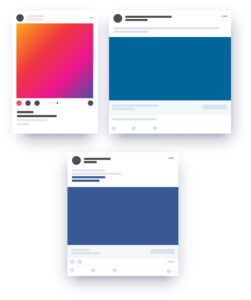Revamp Your Tourism Marketing Strategy in 2025
The travel industry is evolving faster than ever, and what worked last year might not cut it in 2025. To stay ahead, it’s time to rethink your tourism marketing strategy. In this guide, we’ll explore the latest trends, actionable tactics, and areas to focus on for a successful marketing plan.
What you can learn from this article:
- How to define and refine your target audience using data-driven insights.
- Innovative marketing tactics, from AI-powered itineraries to gamified travel planning.
- How to optimize your digital presence and build strong, strategic partnerships.
Define (or Redefine) Your Target Audience & Personas
If you’re still relying on broad, outdated audience assumptions, you’re leaving serious money on the table. The way travelers research, book, and experience destinations is shifting fast, and if your marketing isn’t keeping up, you’re speaking to the wrong people—or worse, to no one at all.
The fix? Deep market research, real data, and dynamic audience personas that evolve with traveler behavior.
Use Website Data to See Who’s Actually Interested in Your Destination
Google Analytics can show you age, location, device type, and even browsing behavior so you can refine your messaging accordingly.
Pro tip: Set up conversion tracking to see which content actually drives bookings (not just clicks).
Embed Facebook and TikTok Pixels on Your Website to Track Visitor Behavior
These tools let you see what types of travelers engage with your content and retarget potential customers with ads based on their interests.
Imagine you run a luxury travel agency specializing in all-inclusive resorts. You’ve been posting beautiful destination content on social media, but you’re unsure who’s actually interested in booking.
By embedding Facebook and TikTok pixels on your website, you discover:
- A surprising 70% of visitors to your “Top 10 Overwater Bungalows” blog are women aged 35-50.
- Visitors who spend the most time on your site also engage with your Instagram Reels about spa resorts.
- A large chunk of website visitors drop off after checking your pricing page—but don’t book.
 What You Can Do With That Data:
What You Can Do With That Data:
- Retarget those visitors with an Instagram ad featuring a limited-time spa retreat package.
- Create a TikTok campaign showcasing resort perks (private chefs, sunset dinners) aimed at your core audience—women 35-50.
- Test a price-based incentive—running a Facebook ad offering a free excursion for those who complete their booking within 48 hours.
The Impact: You’re no longer just guessing who your audience is—you’re using actual behavioral data to reach potential travelers at the right moment, with the right message, on the right platform.
Tap Into Social Listening Tools (Like Sprout Social or Hootsuite)
See what potential visitors are saying about your destination on social media platforms and identify trends before they peak.
For example, a you might notice that interest in wellness travel is exploding among their audience so you launch spa retreats and meditation-focused experiences before competitors do.
Strengthen Your Digital Presence Across Key Marketing Channels
A strong online presence isn’t just about showing up—it’s about showing up where your potential travelers are already looking and making it effortless for them to take the next step. In 2025, digital marketing in the tourism industry is more competitive than ever, so your brand needs to be visible, optimized, and frictionless across every key touchpoint.
Here’s what that looks like:
Social Media Marketing: Where Should You Focus in 2025?

Focus your social media strategy where it matters most in 2025: TikTok for inspiration, YouTube for guides, and Pinterest for trip planning.
Not every platform is worth your time. The right social media mix depends on your target market, content style, and the travel experiences you’re promoting.
- TikTok & Instagram – Best for destination inspiration, short-form travel storytelling, and influencer collaborations.
- YouTube – The go-to for long-form travel guides, destination storytelling, and in-depth itineraries.
- Pinterest – A powerhouse for trip planning, with users actively searching for travel destinations, itineraries, and unique experiences.
- Facebook & LinkedIn – Ideal for engaging with older travelers, tour operators, and B2B partnerships.
Key social media strategies for 2025:
- Prioritize short-form, high-quality video marketing.
- Use destination-specific hashtags and location tags to reach potential visitors already searching for their next trip.
- Invest in user-generated content (UGC)—real travelers’ experiences build trust better than any ad.
Search Engine Optimization (SEO): Get Found by Travelers Searching for Destinations
Travelers don’t just browse social media. They Google everything before booking a trip. If your tourism business isn’t optimized for search engine visibility, you’re missing out on highly motivated potential customers.
SEO strategies that work in 2025:
- Target long-tail keywords – Instead of just “best hotels in Greece,” optimize for “best boutique hotels in Santorini with infinity pools.”
- Prioritize local SEO – Claim your Google Business Profile and optimize for “near me” searches (e.g., “wine tours near Napa Valley”).
- Answer real traveler questions – Create content based on what people actually ask (e.g., “Is Bali safe for solo travelers?”).
- Optimize for voice search – More people are searching using Siri and Alexa. Your content should match conversational queries (e.g., “What’s the best time to visit the Amalfi Coast?”).
- Boost site speed & mobile UX – Google prioritizes fast, user-friendly sites. If your page takes too long to load, you’re out of the running.
A strong SEO strategy ensures your content gets in front of travelers at the exact moment they’re making travel decisions.

Your website should feel like a first-class experience! Make it fast, seamless, and bookable — because travelers won’t wait.
Website Essentials: Make It Seamless, Fast & Bookable
Your website is your digital storefront. If it’s slow, clunky, or confusing, potential travelers will leave before booking.
Key website essentials for 2025:
- Mobile-first design – Over 60% of travelers book trips on their phones. Your site needs to be fast, easy to navigate, and optimized for small screens.
- Effortless online booking – If visitors have to call or email to book, you’re losing sales. Use a seamless, one-click booking system that integrates with major travel platforms.
- User experience (UX) that removes friction – Every click should feel intuitive. Test your site as if you’re a first-time visitor—is it clear where to go next?
- Customer reviews & testimonials – Travelers trust real experiences more than brand messaging. Feature reviews prominently.
- AI-powered chatbots & instant support – Make it easy for potential customers to get answers in real time, especially for complex bookings.
Using tools like Google Search Console and heatmaps (such as Hotjar) can help track how visitors navigate your site and identify problem areas where users drop off.
Beyond the Basics: What’s Actually Moving the Needle in 2025
We get it—content marketing is nothing new. You already know video is huge, real-time engagement matters, and polished Instagram posts alone won’t cut it anymore. But in 2025, the real winners in tourism marketing are the brands that go deeper, get more creative, and make booking a trip feel like an experience in itself before travelers even pack their bags.
Here’s what’s actually working:
AI-Powered Itineraries That Feel Like a Human Made Them
A lot of travelers love the idea of a well-planned trip but don’t love the process of planning one. That’s where AI is stepping in, but not in the impersonal, one-size-fits-all way you might expect.
New AI-driven itinerary builders are helping travelers put together trips that actually fit their vibe—whether they’re into off-the-beaten-path food spots, adrenaline-fueled adventures, or slow, scenic mornings at local cafés. The best part? These tools pull in real-time pricing, event details, and even availability, making it easier than ever to go from “this looks cool” to “let’s book it.”
For DMOs and tour operators, offering something like this can keep travelers engaged longer and make booking feel effortless.
The Rise of ‘Content-Embedded’ Booking
People spend hours scrolling through travel blogs, TikToks, and destination guides, getting excited about new places. But too often, there’s a gap between inspiration and action.
Instead of making travelers search for how to book an experience, smart brands are embedding booking options inside their content. A potential visitor reading about a scenic hiking trail? Let them reserve a guided trek on the spot. Watching a video about an incredible boutique hotel? Add a “Check Availability” button right there.
The easier you make it to book in the moment, the less likely you are to lose that traveler to distraction—or to a competitor.
Gamified Travel Planning
Let’s be honest—trip planning can feel overwhelming. Too many options, too much research, too many tabs open at once.
Some brands are making it fun instead. Think interactive quizzes that build a custom itinerary based on a traveler’s personality, scavenger hunts that encourage exploring different parts of a destination, or rewards for engaging with content. The more enjoyable you make the planning process, the more invested people become in actually following through with their trip.
Plus, gamification naturally encourages sharing. Someone who just earned a “hidden gem explorer” badge or unlocked a special discount for their trip is way more likely to tell their friends about it.
High-Impact Print That Doesn’t Feel Stale
In a world where everything is digital, there’s something refreshing about holding a beautifully designed travel guide, a collectible map, or even a postcard from a place you’re thinking about visiting.
Print isn’t dead—it just has to be done differently. Instead of generic brochures, we’re seeing high-quality, thoughtfully designed materials that feel worth keeping. Some destinations are even incorporating AR elements, letting travelers scan pages to bring them to life with video or interactive content.
For DMOs, travel agencies, and tour companies, sending a physical touchpoint—whether it’s a sleek travel guide or a personalized note—can cut through the noise and make an impression in a way an Instagram ad just can’t.
‘Before You Book’ Experiential Content
Scrolling through travel photos is one thing. Actually experiencing a place—even virtually—is another.
More brands are experimenting with immersive pre-trip experiences, from interactive video tours to live Q&As with locals. Instead of a basic hotel walkthrough, travelers can “choose their own adventure” and explore different parts of a destination before they book whether that’s wandering through a street market, checking out a hiking trail, or seeing a sunset from a rooftop bar.
Even simpler things, like offering a real-time chat with a local guide or a virtual concierge service, can go a long way in making potential visitors feel more confident about booking.

AI and automation are transforming travel marketing. Personalize experiences, target travelers with smart segmentation, and send the right message at the right time for better engagement and conversions.
Personalization & Automation
Personalization has moved way beyond addressing emails with a first name. In 2025, AI and automation are transforming how travel brands deliver custom experiences.
With smart email marketing segmentation, you can target travelers based on their past behavior, preferences, and stage in the buying journey. You can send the right message at the right time, whether it’s a last-minute offer to those who abandoned their booking or tailored destination recommendations for someone who has already visited a nearby spot.
All this data and automation come together to improve the overall customer experience, making it feel seamless and tailored to each traveler’s needs. The result? Increased engagement, higher customer satisfaction, and better conversion rates.
Build Strategic Partnerships for Expanded Reach
Collaborating with local businesses and attractions is one of the smartest ways to amplify your tourism marketing. These partnerships not only help share resources but also introduce your brand to new audiences. By promoting local businesses—whether it’s a café, art gallery, or outdoor adventure company—you create a more authentic and interconnected travel experience.
Co-branded tourism marketing campaigns can help elevate your brand’s visibility. Team up with local businesses to create joint content, promotions, or special offers that benefit both parties. This way, you’re not just reaching your own audience but tapping into theirs as well, leading to stronger brand awareness.
Incentives like discounts, exclusive offers, or behind-the-scenes experiences can further drive engagement. Whether it’s a special package or a unique experience, adding value for your customers builds excitement and makes your destination stand out.
Strategic partnerships are about creating mutually beneficial relationships that drive growth and engagement for everyone involved.
Measure, Optimize, and Adapt
To stay competitive in 2025, it’s important to measure your marketing efforts and keep improving them. Start by tracking key metrics like website traffic, conversion rates, social media engagement, and customer acquisition costs. These insights will help you understand what’s working and where you can make improvements.
A/B testing is a great way to refine your marketing strategy. Test different versions of social media posts, email campaigns, and pricing strategies to see what resonates most with your audience. Small changes can lead to big results.
Finally, being flexible is important. The travel industry is always changing, and market trends or traveler behavior can shift quickly. Be ready to adjust your marketing plan based on real-time data, so you’re always in sync with what your audience is looking for.
Conclusion & Next Steps
- Revamping your tourism marketing strategy requires a mix of creativity, technology, and market research.
- If executing all of this feels overwhelming, outsourcing to an experienced agency like Paperkite can help maximize results.
- Call to action: “Let’s talk—see how Paperkite can help optimize your tourism marketing strategy in 2025.”



